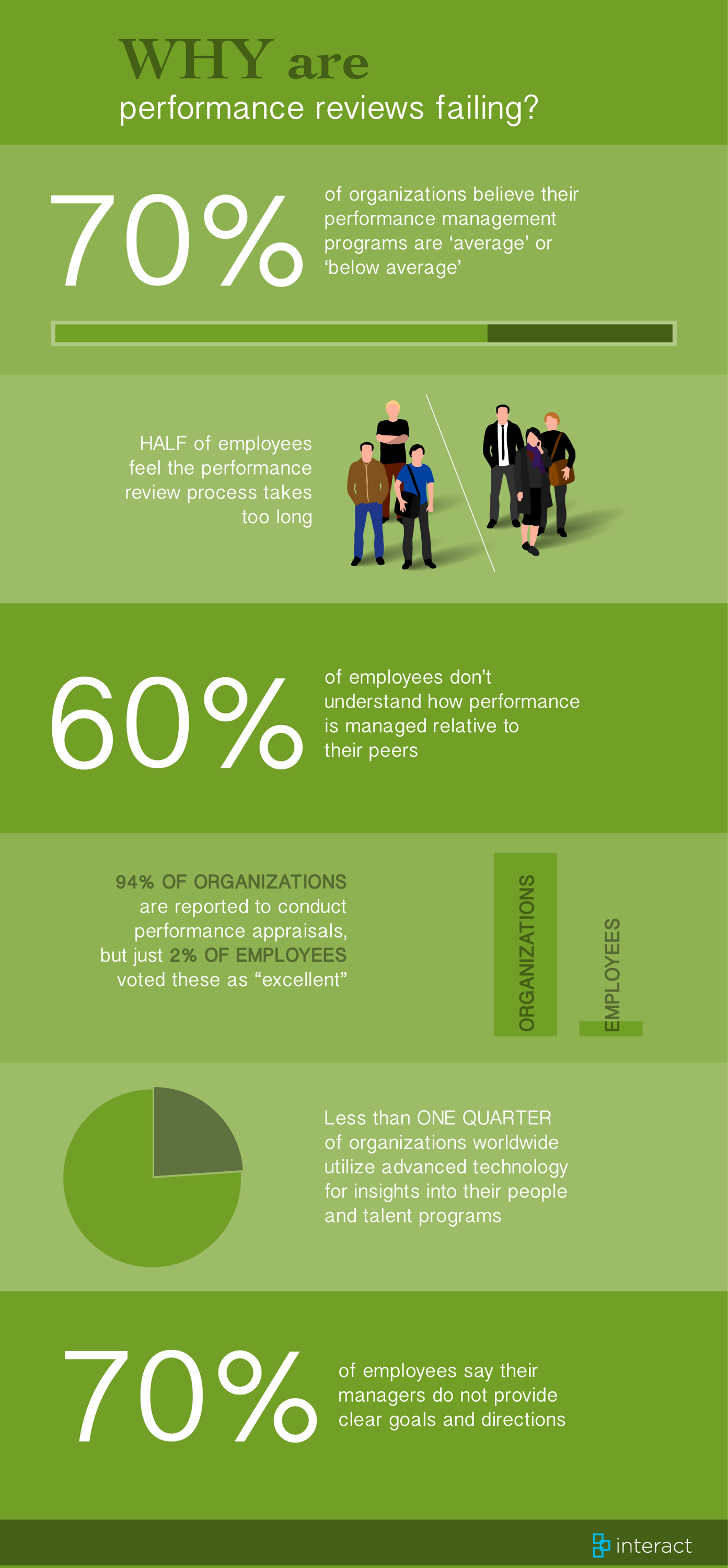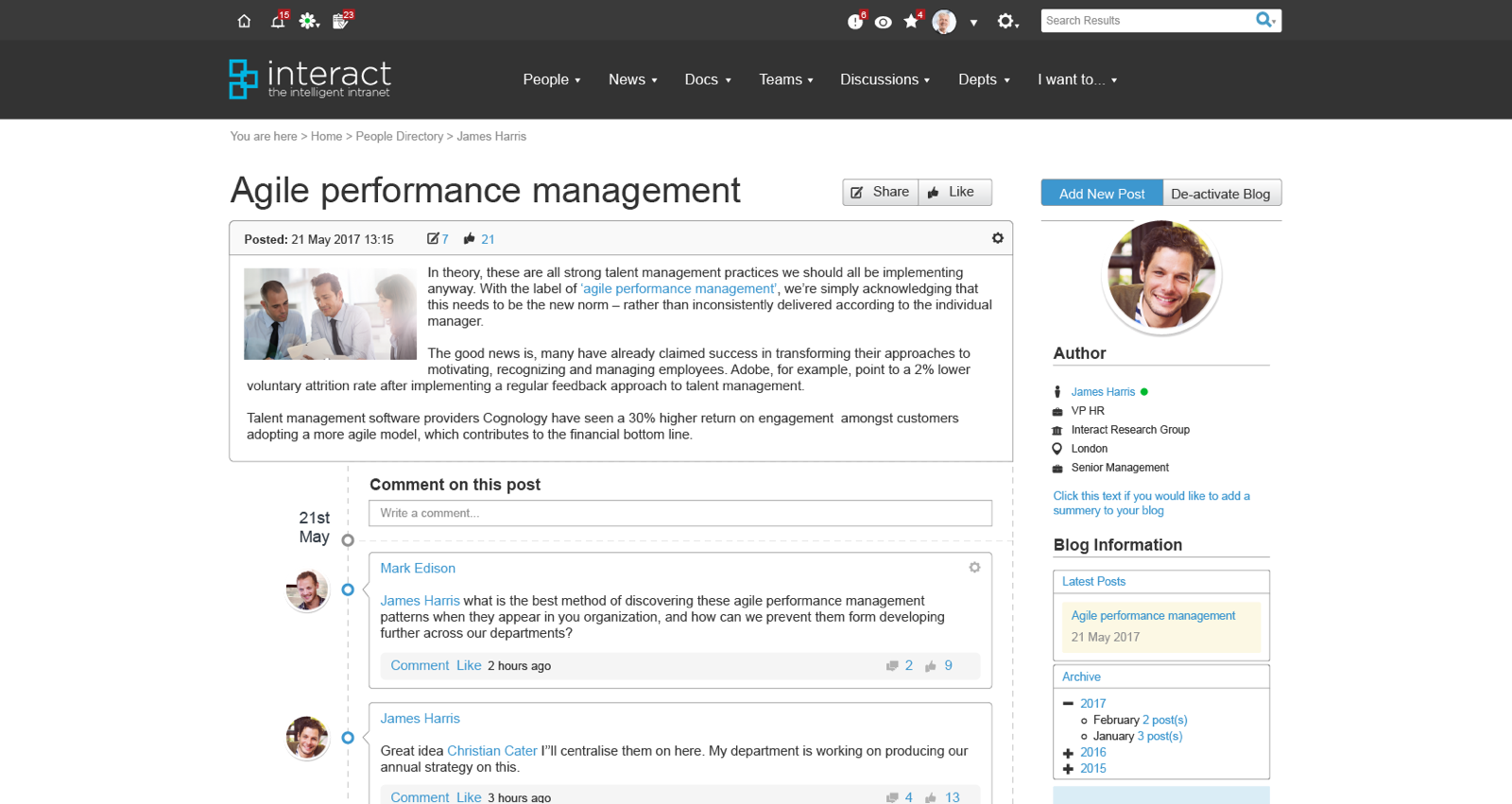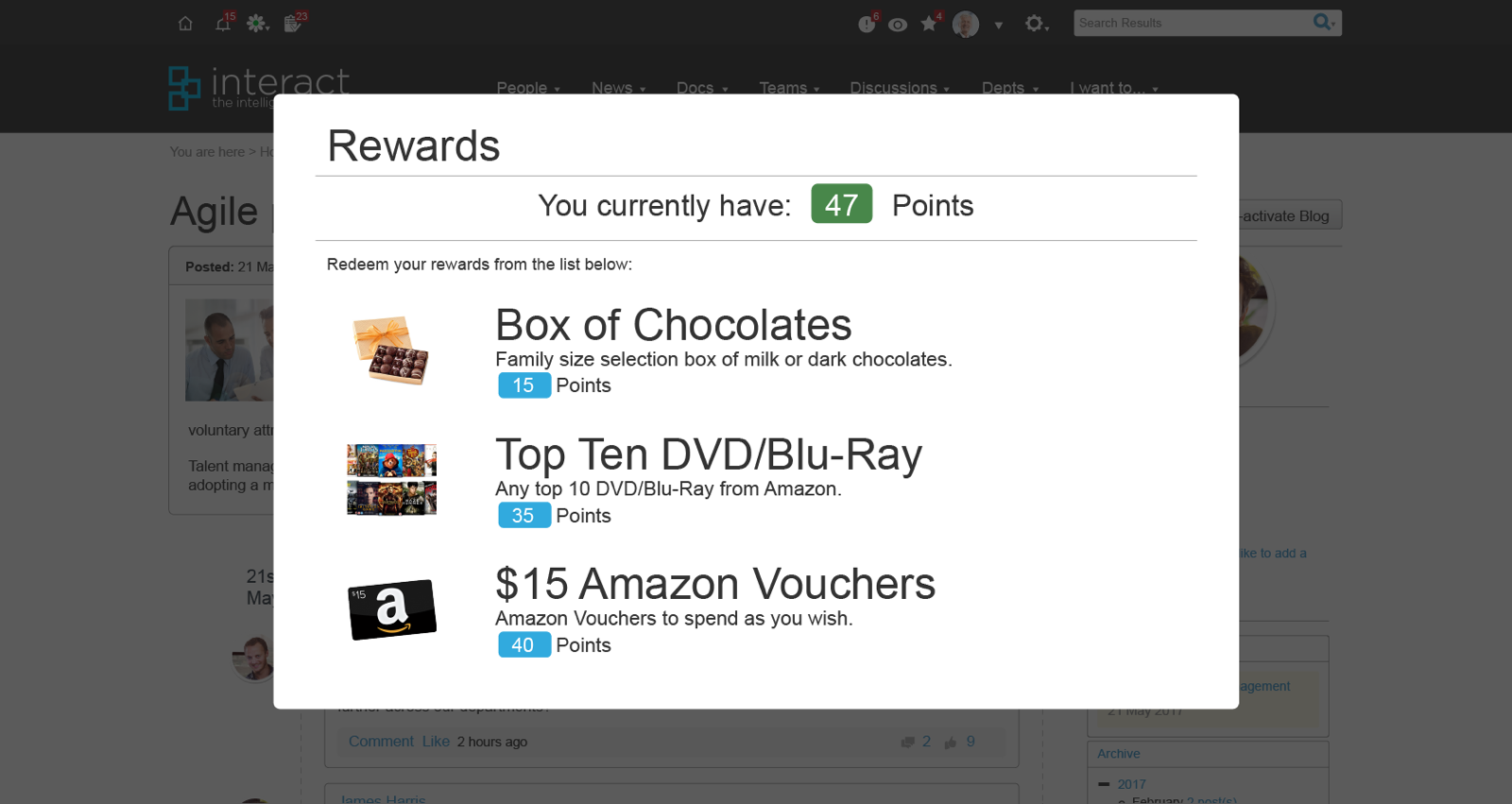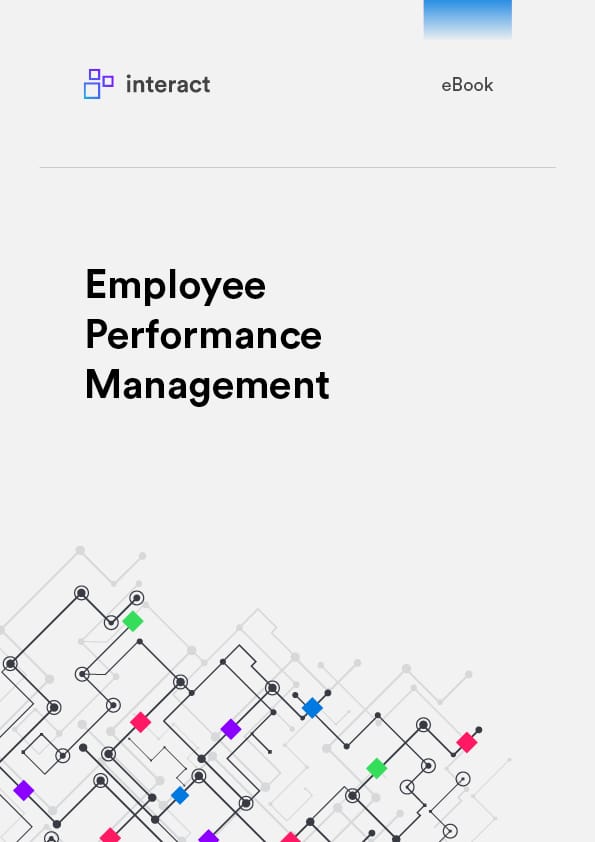6 tips to create agile performance management in your business
“Annual performance reviews,” report performance management consultancy experts Gallup, “no longer work.”
In fact, research results from Brandon Hall Group’s 2015 survey show 70% of organizations believe their performance management programs are ‘average’ or ‘below average’.
With performance reviews (ironically) getting a bad review, it’s time for a change.

It’s a process of evolution that’s already under way. In recent years, the HR industry has seen an explosion of the buzz phrase “agile performance management”, a topic that dominated the conference scene throughout 2016. Hailed as the successor to the structured annual performance review, it’s being coined ‘the future of performance management’ by the likes of McKinsey, pwc, Harvard Business Review…need I go on?
Tech companies have unsurprisingly led from the front, with early adopters including Microsoft (which abolished its employee evaluation system way back in 2013), Netflix (which turned its back on annual objectives) and Adobe (who pioneered a ‘check-in’ system as an alternative).
The reason for the shift lies in the growth of technology. The workplace is more collaborative, social and fast-paced; we’re communicating in real time and expecting the same of our conversations with managers. And contrary to popular belief, it’s not just the Millennial generation demanding the change.
So, what is ‘agile performance management?’
Before we get lost in the jargon, it’s important to point out that the concept is pretty simple – and far from new.
There are multiple articles that delve into the depths of what ‘agile performance management’ looks like, but they all focus on 3 key, core elements:
- Frequent feedback, rather than bi-annual/annual structured reviews
- Regular conversations, check-ins and flexibility, rather than annual objectives or formal arranged meetings
- Coaching conversations and a focus on growth and development, rather than on delivery against objectives
In theory, these are all strong talent management practices we should all be implementing anyway. With the label of ‘agile performance management’, we’re simply acknowledging that this needs to be the new norm – rather than inconsistently delivered according to the individual manager.
The good news is, many have already claimed success in transforming their approaches to motivating, recognizing and managing employees. Adobe, for example, point to a 2% lower voluntary attrition rate after implementing a regular feedback approach to talent management.
Talent management software providers Cognology have seen a 30% higher return on engagement amongst customers adopting a more agile model, which contributes to the financial bottom line.
While the principles are basic, making the move towards a more agile performance management model requires a shift in the very culture of an organization that isn’t always so easy to achieve. Our top 6 tips will give you a foundation for making the move.
1. Get the right tools in place
The administrative processes required for performance management present a consideration burden on HR and management resource. When the boundaries around performance management become more agile, that becomes more complex still.
Ensure you have the right tools in place to facilitate the process. This will include centralized hosting of all documentation around the process – from feedback forms and managerial guidelines through to progression charts and surveys. Reporting and management tools are needed to ensure interactions and performance indicators are tracked, providing an important audit and overview for those charged with managing the process. This ensures access and consistency across your business.
One of the core, fundamental principles of agile performance management is the need for open, honest two-way communication and collaboration. Putting the right channels in place to enable this is key. Research suggests that this needs to go beyond paper-based forms or structured face-to-face meetings.
An intranet with social communication tools including forums, blogs and team areas is one example; this also supports automated processes and offers insights using metrics and analytics. Your intranet can be used to alert line managers to negative feedback on surveys or the failure to complete required forms or documents, as well as sending out reminders, calendars and to crowdsource feedback.

2. Managers are key – train them
Consider the 3 governing principles for agile performance management; what do they hold in common?
They all point to conversations and the relationship between employee and manager.
Managers are the core piece to the performance management process; they’re also commonly cited as the primary reason why employee chose to leave their jobs.
Once you have committed to a more agile, flexible approach to managing talent within your business, the process and underlying principles need to be cascaded to those responsible for championing it.
Provide initial training and follow it up with regular coaching and check-ins with managers to ensure that challenges are raised and addressed. Bringing together different managers or setting up a dedicated task group will support consistency and best practice, ensuring agile performance management becomes embedded into the culture of your business.
3. Empower employees
“Performance management is often a source of great frustration for employees who do not clearly understand their goals or what is expected of them at work.: (5 Ways to transform the annual performance review’, Halogen Software)
One objection raised against traditional performance management is that employees don’t truly understand how their role links to the overall objectives of the business. If you aren’t sure how your role contributes to the success of your organization, how do you know you’re performing?
Empower employees by communicating your organization’s values, vision and mission. Adopt a policy of transparency to communicate what you do: the challenges, the events, the achievements. When celebrating success, use management blogs and ensure recognition is given to the role of each part of the business that contributed to the achievement. When employees can recognize and receive feedback on the part they’ve had to play, it has measurable impact on engagement levels, productivity and bottom line outcomes.
Enable employees to promote their own achievements utilizing intranet blogs, company newsletters or opportunities to present to their peers. When goal-setting or laying out individual objectives, link these to the overall mission and direction of the business; for example, “your target this quarter is $25K of sales from this particular vertical; this is to support our business strategy to increase presence in the vertical by X% at the close of 2017”.
Performance management isn’t a one-way process; give employees the ability to provide bottom-up feedback and opportunities to initiate conversations or check-in with managers as needed. By sharing the responsibility of ‘frequent feedback’ between employee and manager, the process is more likely to see success.
4. Tap into the collective: crowdsourcing and social recognition
One of the most significant changes in the workplace is organizational structure. Thanks to globalization and cloud technologies, the traditional hierarchy is making way for a collaborative environment.
67% of employees report an increase in work requiring active collaboration, while 57% report an increase in the number of coworkers they work with in other geographic locations. There is also a marked increase in telecommuting, flexible working and blended workforces.
The process of providing frequent feedback and recognition, therefore, is no longer the sole responsibility of line managers. Peer to peer, peer to manager and manager to peer recognition is now key to truly understanding performance. Establishing channels for crowdsourcing feedback and enabling individuals to give and receive recognition freely is fundamental to successful agile performance management.

This is where digital and social collaboration tools, such as intranets or enterprise social networks, can play a vital role. Interact’s integrated reward system allows individuals to give instantaneous feedback or social recognition, celebrating successes ‘in the moment’. Use of team areas can also ensure remote based workers have their say and feedback to other project or team members.

This process opens the scope for performance feedback and provides a centralized, searchable platform for managers to tap into.
5. Emphasis on development and forward looking performance
Newer generations entering the workplace assign more value than ever on their development. “Millennials are not pursuing job satisfaction – they are pursuing development,” writes Jim Clifton, Chairman and CEO of Gallup. “Purpose and development drive this generation.”
Restricting discussion about career progression and development to an annual meeting is likely to have significant negative impact upon levels of employee engagement, productivity and turnover; what’s more, taking a structured, ‘one-size-fits-all’ approach to the process can prove hugely detrimental.
Traditional performance review processes have focused on backward looking assessment against fixed goals, often including a year-end rating; a process which, pwc argues, “sets a tone of conversation managers are reluctant to have and employees do not like either.”
The agile solution is not to eradicate conversation around performance, but to give feedback in real time and shift focus to future growth, rather than past performance. Regular, open discussions about career aspirations and goals ensure flexibility – enabling both individual and business to evolve and adapt in line with business requirements. Supporting managers to enter the role of coach, rather than assessor, is vital.
By shifting the focus from “did you hit this goal or KPI” to “how do we support you in getting to the next goal”, both manager and employee will foster a more positive approach to performance management.
6. Flexible goal setting
Organizations don’t remain static. Political, economic and market changes can cause a business to change direction at any movement; that’s before we even consider internal changes including appointments, new products and many more.
Setting goals at the beginning of the year, even at strategic level, is fast becoming outdated practice. However, research by Bersin by Deloitte shows that senior executives revise goals almost three times as frequently as employees – despite evidence that those organizations that have employees revise or review foals quarterly or more frequently are more than 3.5 times more likely to score in the top 25% for business outcomes.
Given the time between setting goals and then evaluating their success, why do we continue to expect once a year objectives for employees to be effective?
When establishing agile performance management, make frequent review and setting of objectives an expectation for employees at all levels, not exclusively middle management and above. Ensure this includes looking at how those goals were achieved, or why they were missed; understanding the process and establishing open discussion and evaluation is actually more vital than the achievement of the goal itself.
Agile Performance Management: the time is now
In a fast-paced digital age in which individuals are accustomed to communicating in real time, employees increasingly expect conversations with managers and their organization to be instantaneous. The resulting shift away from traditional annual reviews or formal performance management processes is setting new expectations for organizations.
Agile performance management focuses on process as much as the end goals, striving for continuous improvement and real time understanding of employee opinions, issues or concerns. The result is a strategic approach that keeps up with business changes and trends, while empowering employees through two-way regular feedback and conversations.
There is no standard approach that will suit all organizations; what works well in one industry may fail in other. Eradicating formal performance review processes may not be an option for some.
However, the business benefits of an agile approach – which span increased productivity, higher retention rates, improved engagement and bottom-line profitability – make the case for change – or, at least, combining more agile, ‘in the moment’ practices alongside the traditional review.
Are you considering a change to your performance review process? How do you think businesses can achieve a more agile approach?

